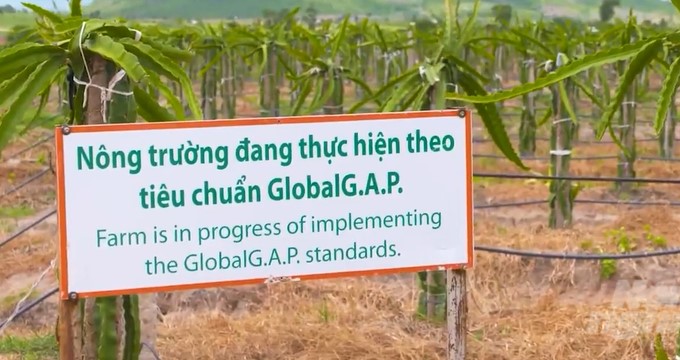June 19, 2025 | 05:25 GMT +7
June 19, 2025 | 05:25 GMT +7
Hotline: 0913.378.918
June 19, 2025 | 05:25 GMT +7
Hotline: 0913.378.918
Vietnam has a common border with China but stretches over 15 latitudes to the South, with some areas up to 2,000 km away from China. Blessed by nature with seven typical agricultural regions, Vietnamese fruits enjoy the best and most quintessential natural conditions from the soil, water, and air; all four seasons have characteristic sweet and aromatic fruits, which is likened to "Four-season delicacy".
Thanks to natural factors and strict compliance with farming standards, Vietnamese fruits have been exported to many countries and territories around the world. In particular, with the closeness of culinary culture, Vietnamese fruits have been especially favored in China, Vietnam's comprehensive strategic cooperation partner.

Currently, 12 types of Vietnamese fruits are officially exported to China.
China is now Vietnam's largest agricultural product export market. There are 12 types of Vietnamese fruits that are officially exported to China with strict quality and safety inspection procedures.
One of the impressive export products is durian. In 2023, more than 33,000 tons of Vietnamese durians were delivered to Chinese consumers, accounting for 33% of the durian import market share here after only 2 years of official export to this market.
In the last lychee crop, 9,200 tons of fresh lychees with the best quality were exported to China. Besides, other fruits such as fresh coconut, watermelon, mangosteen, passion fruit, etc. also have a good growth rate. Thanks to consumer popularity, Vietnam's fruit export turnover to China is increasing and is estimated to reach approximately 35.25 billion yuan (equivalent to USD 5 billion) in 2024.
Not only is quality and food safety guaranteed, but modern post-harvest preservation and processing technology is also invested by domestic businesses to meet the strictest demands from the market.

The growing process ensures export requirements.
According to Mr. Nguyen Do Anh Tuan, Director of the Department of International Cooperation (Ministry of Agriculture and Rural Development), in meetings between senior leaders of the two countries, market opening is always of concern to leaders, especially for fruit products in particular and agricultural products in general.

Mr. Nguyen Do Anh Tuan said that Vietnam has a lot of potential for fruit export.
The attention of the Party and State leaders of both countries, along with the participation and close coordination of specialized agencies, has actively contributed to promoting the market opening for agricultural products, especially fruits.
According to Mr. Tuan, farmers and businesses have gradually standardized farming processes and complied with export regulations, especially the story of planting area codes. Vietnamese businesses are increasingly methodical and focus on product quality management and pre-processing, preservation, and packaging technology.
Cherished from the moment of blooming and fruiting and carefully selected when harvested, Vietnamese fruits today are not only a wonderful gift from nature, crystallized from the hard work and creativity of Vietnamese farmers, but also a messenger of Vietnamese agricultural products and Vietnamese culture. With that effort, Vietnamese fruits will certainly gain a solid foothold in the Chinese market in the coming time.
Translated by Thu Huyen
/2025/06/17/2344-1-131758_261.jpg)
(VAN) Amid tariff risks and growing trade barriers in the U.S. market, Australia is emerging as a promising destination to sustain the growth momentum of Vietnam's shrimp exports.
/2025/06/17/2013-1-nongnghiep-112009.jpg)
(VAN) This notable growth trend reflects the global taste for fresh, nutritious fruits and the expanding use of lychees across various sectors.

(VAN) The political and cultural insulation of Japan’s beloved grain is falling apart, and experts warn the country’s relationship with the staple will have to adapt.

(VAN) Noting risks, report examines impacts of avian influenza, changing trade patterns since 2022, fish fraud, and shipping industry’s net-zero goals.

(VAN) Mr. Tran Quang Bao, General Director of the Forestry and Forest Protection Department, met and worked with the International Wood Products Association to promote cooperation in the field of timber trade.

(VAN) China's outbound shipments of rare earths in May jumped 23% on the month to their highest in a year, though Beijing's export curbs on some of the critical minerals halted some overseas sales.

(VAN) To sustain capital flow, administrative reform alone is not enough; what farmers truly need is an ecosystem where both government and businesses grow together in support.